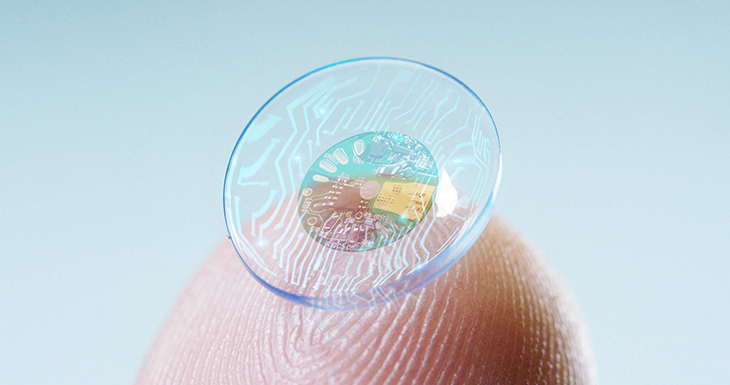
Scientists have developed smart contact lenses precisely to help diagnose cancer, all through the detection of tumor chemicals that are found in tears during the early stages of the disease.
The lenses are able to capture the signals of transporters known as ‘exosomes’ that are a bit like secret messengers within our bodies.
These exosomes that are found in the cells end up in various fluids, having a large amount of proteins on their surfaces which can be used as cancer hallmarks, injury, or viral infections even.
Cancer patients have better survival rates when they have minimized delays to their treatments. In fact, every month increases the risk of death by a whopping 10% when left untreated. What these contact lenses do is offer a potential platform for cancer pre-screening as well as working as a supportive diagnostic tool that is quick, sensitive, easy, non-invasive and cost-effective as well.
Project leader, Professor Ali Khademhosseini, shared, “The lens can detect exosomes in various solutions from various cell lines—and human tears. It can differentiate expression of surface proteins as cancer biomarkers.”
These exosomes were once believed to be the dumping grounds for any unwanted materials, but what scientists have discovered now is that they actually carry many biomolecules between cells. Moreover, they can also strongly influence tumor progression, regulation and spread.
Dr. Khademhosseini went on to say, “They are a rich source of markers which can be targeted for several biomedical applications. The methodology our team has developed greatly facilitates our ability to tap into this source.”
While previous attempts to harness the importance of these lenses have been impeded by issues in getting enough required information for the success of this project, the current methods now involve incredibly complicated, tedious, costly, and time-consuming equipment. Moreover, it takes at least 10 hours to complete a single analysis as well.
But thankfully, Dr. Khademhosseini’s U.S. team has now gotten rid of all these issues. They’ve found that tears are also much better and cleaner as a source of exosomes than any other body fluid.
The eyeglass is fitted with microchambers that are bound to antibodies where the exosomes can stick. Experiments resulted in successful testing on the exosomes that were secreted into lab liquids from at least 10 different tissue and cancer cell lines, as well as tears from ten different human volunteers.
These exosomes were then scanned by using a pair of antibodies on gold nanoparticles so that potential cancer signs can be visualized.
Additional analysis then showed the that the lens managed to identify exosomes in solutions from three cell lines with varying surface markets, and by using different combinations of antibodies.
“The resultant patterns of detection and non-detection of exosomes from the three different cell lines were as expected. It validated its ability to accurately capture and detect exosomes with different surface markers,” said Dr. Khademhosseini.
When the times comes for these contact lenses to become household products, the world will hopefully become more cancer-free with people getting the diagnosis and treatment they need faster than ever before.



